How to use a rain barrel: expert tips for storing rainwater in your yard
Find out how to use a rain barrel correctly and you will get lush and healthy plants as well as conserve water and save money

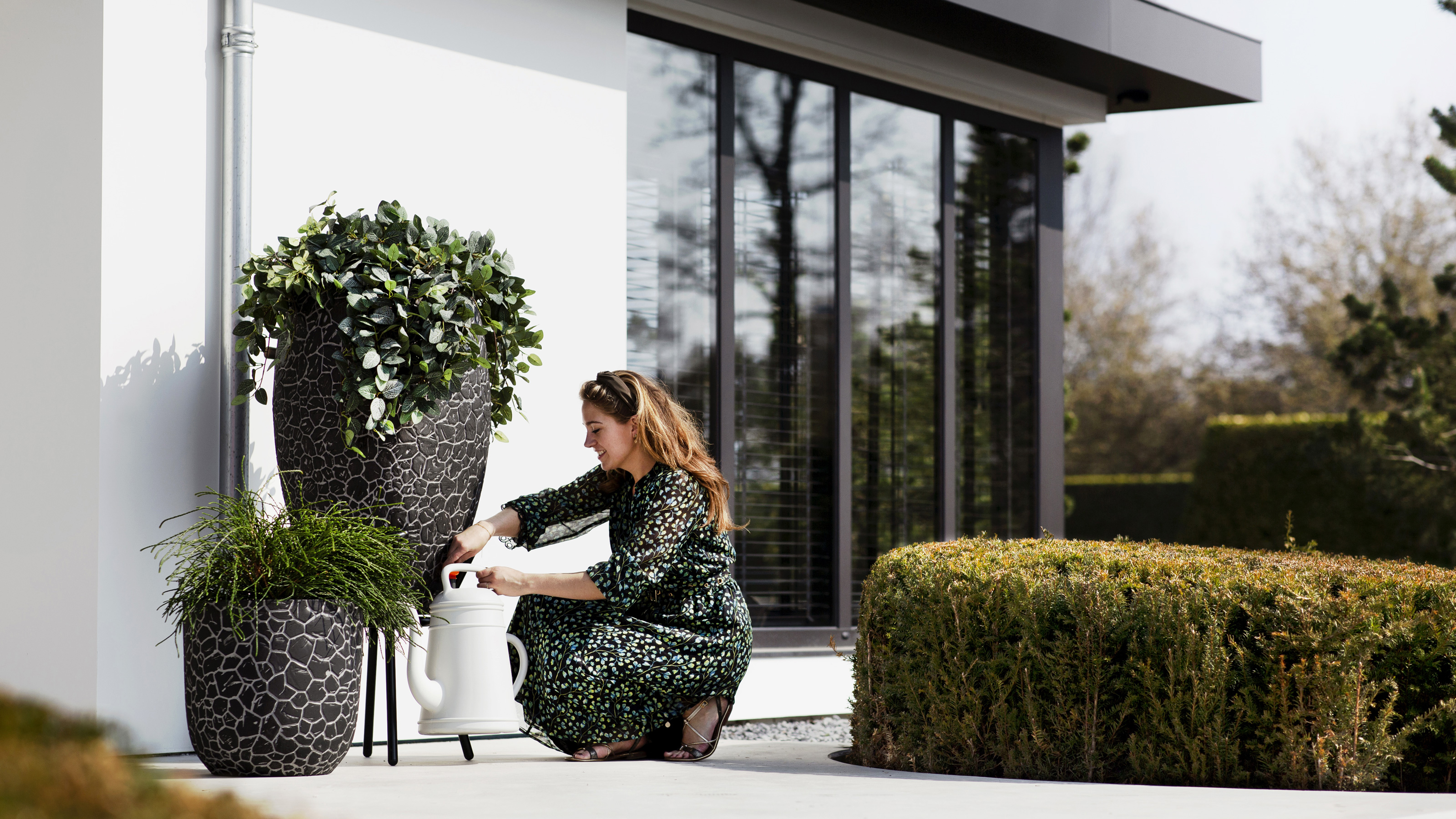
Once you find out how to use a rain barrel properly you'll really be able to get the most out of it. A rain barrel (also known as a water butt) is used to store rainwater and can be any size or shape, as long as water from a drainpipe can flow down into it. Collected water can then be used to water plants and crops, as well as top-up ponds and other water features.
Rain barrel water is better for plants than tap water, which goes through a filtration process to make it safe for us to drink. The addition of chemicals such as chlorine is not such a plus for plants though. Rainwater, however, contains beneficial nitrates and other organic matter that feeds plants to contribute to their health.
Rain barrels are also cost-effective as this water collection method is free so helps to keep water bills down. The initial saving may not seem worth it but over time the savings will soon add up. Collecting rainwater, especially in a barrel made from recycled plastic, is great for the environment too and using stored rainwater also lowers your carbon emissions.
Even better, get ahead of the next heatwave by adding one of the sleek new rain barrels to your garden. You'll have a ready supply for watering plants to keep them looking lush in the event of a hosepipe ban.

Expert tips on how to use a rain barrel effectively
- Rain barrels attach to downpipes running from gutters and are fed by a diverter that syphons water from the downpipe into the barrel. Once full, the rainwater coming off the roof simply continues into the drain, making it a perfect method for how to collect rainwater.
- Ideally, position a rain barrel where you most need water such as next to a kitchen garden, or near the house for easy access when watering houseplants.
- Site the rain barrel in the shade if possible, as the water will be kept cooler, which will reduce the chance of bacteria flourishing.
- Raise your rain barrel off the ground so you can use the tap at the bottom and fit a watering can underneath. If the barrel does not come with a stand, create a base to stand it on using an even stack of bricks.
- Insulate the water butt with a reflective material to reduce the water temperature in warm weather.
- Make sure your rain barrel has a lid to stop debris falling in and to prevent flies and mosquitoes laying eggs in the water.
- Try making a filter to cover the inlet to the rain barrel and prevent leaves and other debris contaminating your stored water. Pantyhose are perfect for this.
- Rain barrels come in a range of different sizes and there will be one to fit the space you have available. You can also join several together if you have a large garden.
- Water butts are easy to install and widely available online and from DIY stores. Installation kits include the barrel, a diverter and a tap for filling a watering can.
- Don't forget about your lovely supply of fresh rainwater. Using the water frequently helps to dilute stored water with fresh water to help keep the water clean.
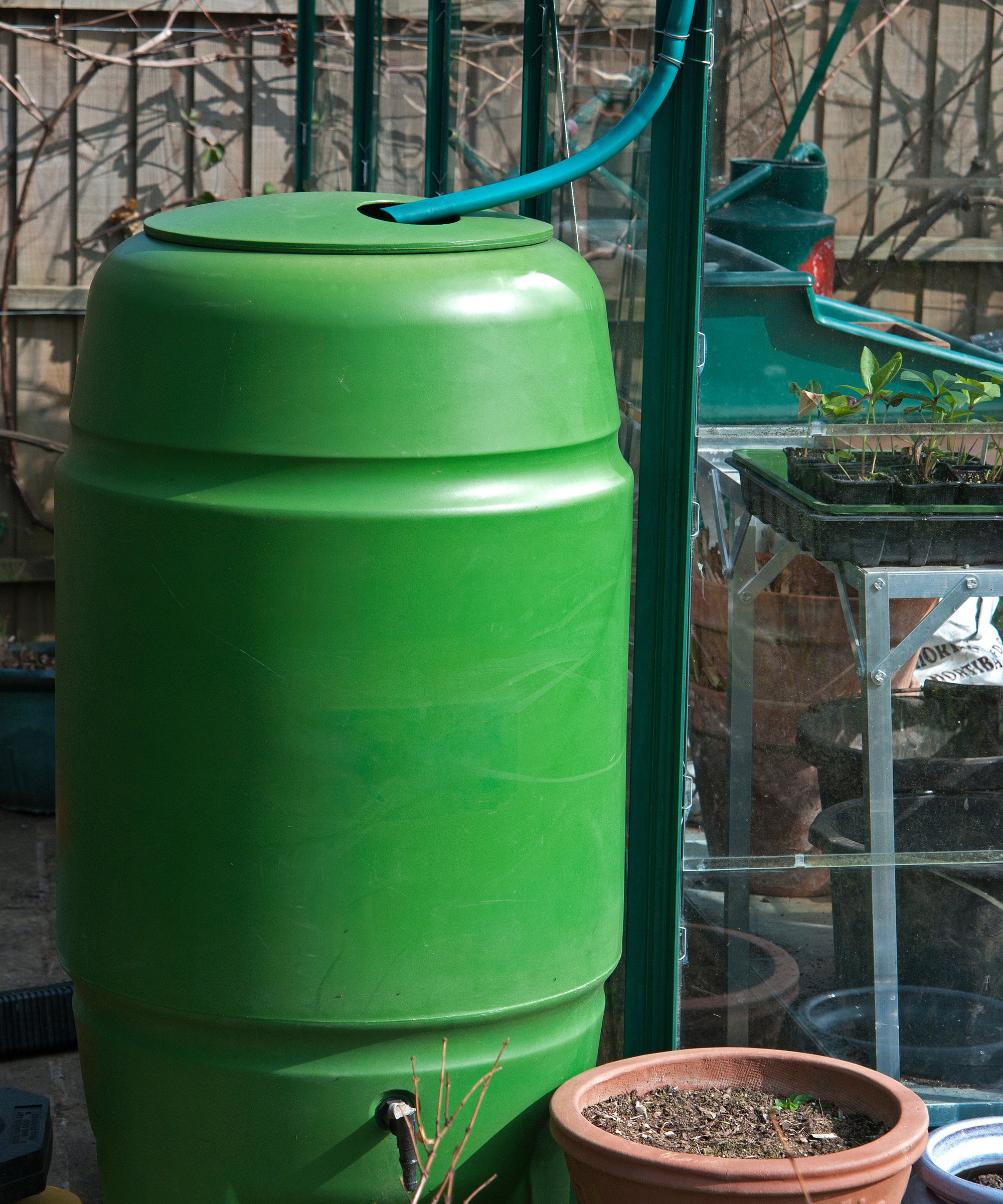
Why do you need a rain barrel in your yard?
If you have an under-utilised one in a forgotten corner of the yard it's important to find out how to use a rain barrel correctly and discover the rainwater benefits for watering plants.
Alternatively, if you're new to the idea you're not alone. Rain barrels are big news right now. The Royal Horticultural Society (RHS) is reminding gardeners of ways to conserve water on their plots by making subtle changes to how they collect and use water. One of their recommendations is that gardeners install a water butt.
'Gardeners are having to be smart about how they water their gardens by investing in a water butt,' says Mark Gush, head of environmental horticulture at the RHS. 'Thinking ahead is one of the best things we can do in preparing our green spaces for weather extremes, ensuring that even during the height of summer they provide a green oasis.'
Amateur Gardening magazine expert Ruth Hayes agrees on the importance of rain barrels. She has five (yes five!) rain barrels situated around her garden. 'Water butts are an essential piece of gardening equipment because harvested rainwater is better for plants than tap water, and of course once you’ve got your butt installed, collecting water is free and saves money as part of your garden water saving tips.
'Mine are attached to downpipes from the house, the greenhouse and the shed, which makes it so much easier to transport water to exactly where it's needed, and between them they hold a whopping 800 litres of water when full.'
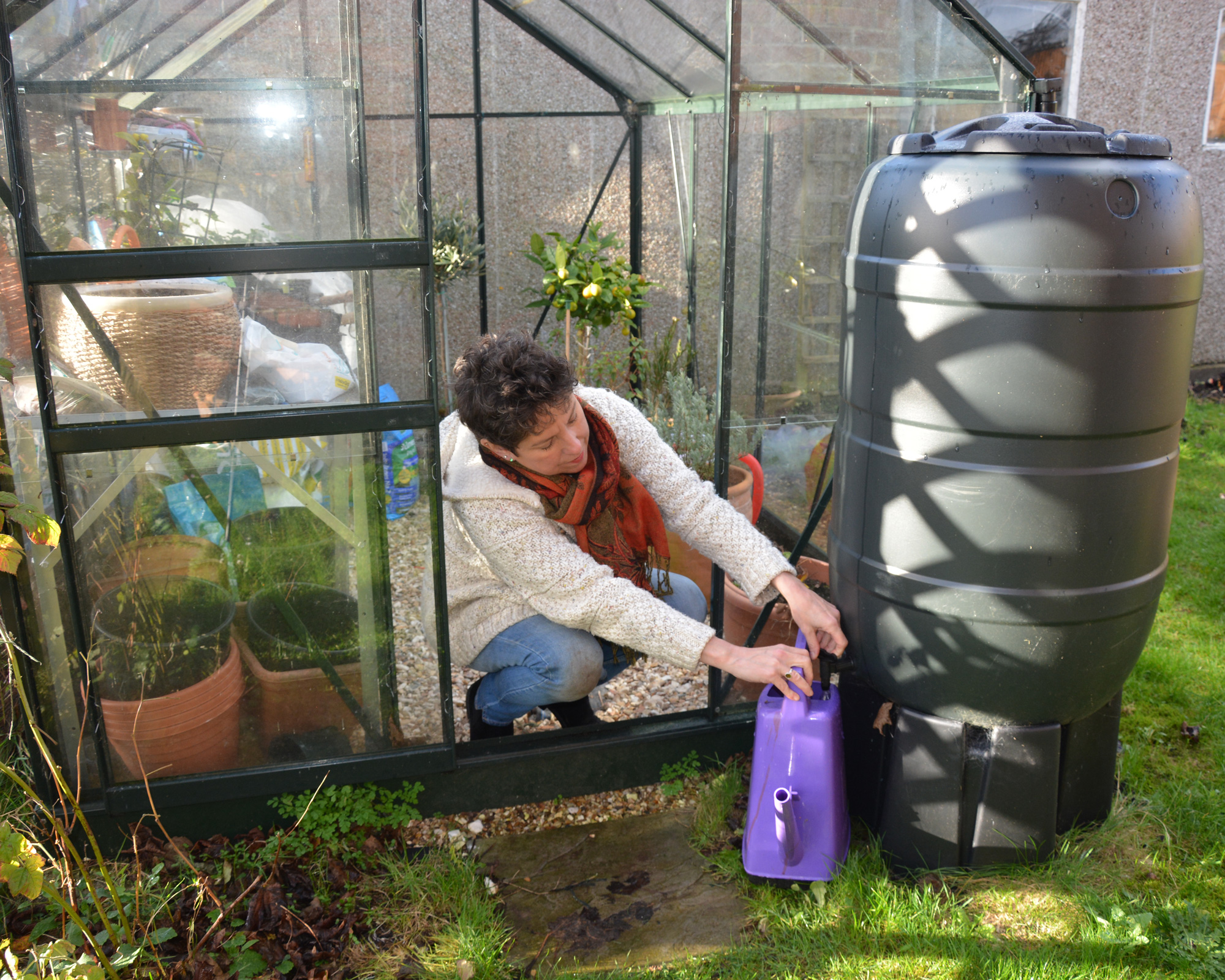
What's the best design for a rain barrel?
There are plenty of widely available options to choose from including smart designer styles. The most common variety of rain barrel tends to be those made of green plastic with a black lid. However, there are a variety of other designs and shapes available, including ones that are beehive-shaped or slimline, as well as a variety of materials such as terracotta, clay and wood.
You can also buy rain barrels with integrated planters, as well as slimline models for slotting into narrow spaces as part of your small garden layout ideas. You can of course also have a go at making your own if you're up for an easy DIY project as part of your sustainable gardens ideas too.
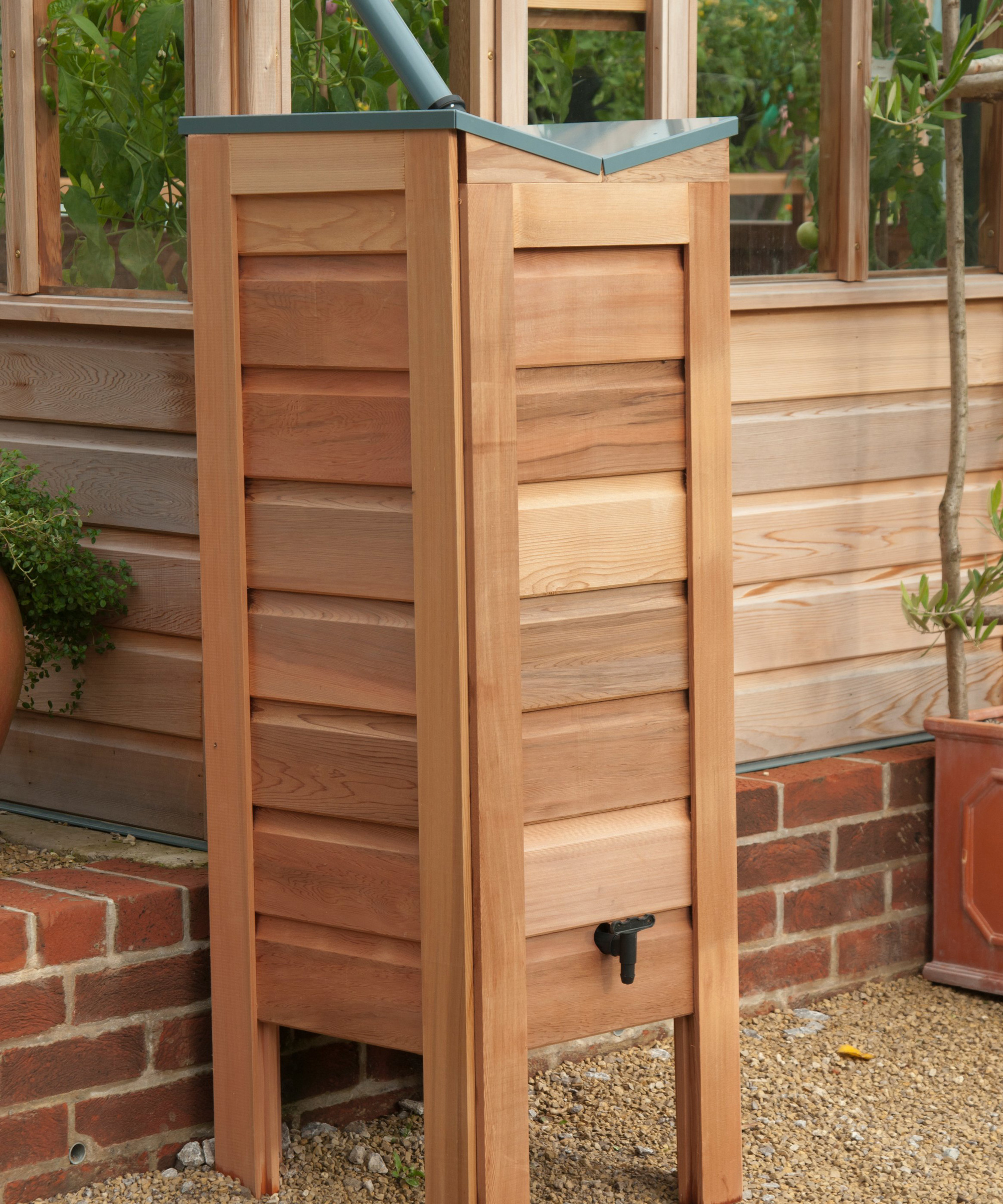
How do you keep the water in a rain barrel fresh?
'There are a number of steps you can take to ensure the water in your water butt or rain barrel stays fresh for as long as possible,' says Hozelock's Sarah Dixon.
'First, keep the butt or barrel out of the sunlight as much as possible, otherwise algae and bacteria will start to form. It is also important to keep the top covered, as this will prevent any debris from getting inside and contaminating the water.
'There are also a number of treatments available, such as Hozelock's Water Butt Treatment, which have been formulated to treat stored water by preventing unpleasant odors and keeping it free from slime and algae.'
What are the problems with rain barrels?
Rain barrels are easy to use and pretty much problem-free. But one thing to remember if you're looking into how does a water butt work, is that it's important to keep gutters and downpipes clear of leaves, moss and any other debris, especially in the fall, as they will block water getting into your barrel and also increase the risk of contamination.
'It's important to keep your rain barrel covered with a secure lid,' says the experts at Envii. 'Mosquitoes don’t like moving water, which means the still water in rain barrels is the perfect breeding ground for them. A secure, fastened lid will help to keep them out.
'If mosquitoes do make their way into your rain barrel, mix a small amount of olive oil with water and spray over the top of the stagnant water. This will create a film over the surface of the water and kill off the mosquito larvae.'
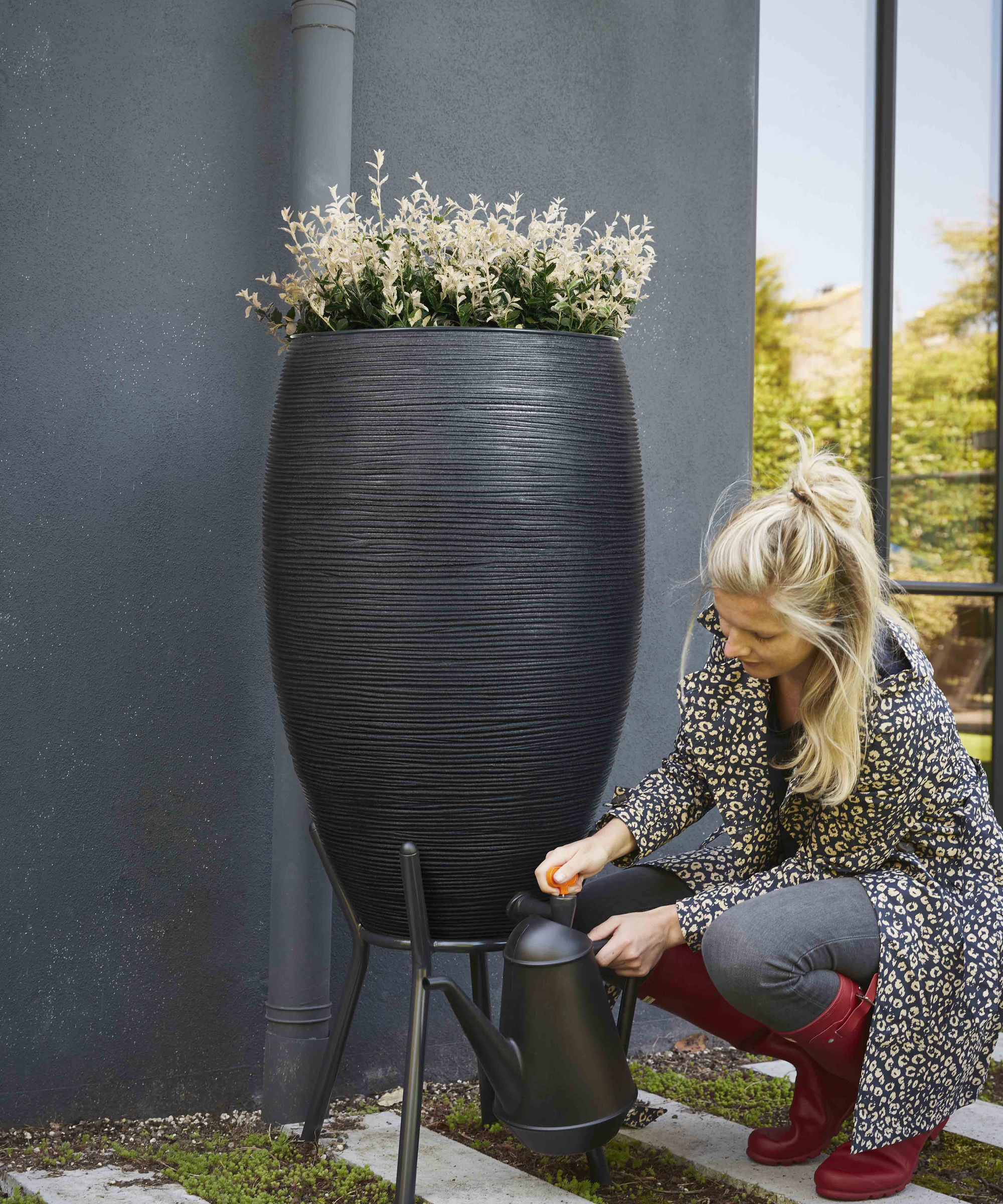
How often do you need to clean a rain barrel?
When it comes to how often to clean a rain barrel the expert advice is pretty consistent. 'I advise cleaning your rain barrel annually,' says Ruth Hayes, 'either by disconnecting it and giving it a scrub or, more easily, by using a treatment such as Envii Water Butt Klear tablets (available from Amazon) that you can drop straight into the barrel.'
The experts at Envii agree that once a year is the way to go. 'Fall is the best time to do it. Clean the outside of the butt using a garden hose to remove grime and stains. Scrub the interior to remove algae and sludge that builds up around the sides.
'Avoid using cleaning products as these can leach into the water and contaminate your soil when watering plants. Instead, use warm water with a mild washing-up detergent, avoiding the use of antibacterial detergents.'


Lifestyle journalist Sarah Wilson has been writing about gardens since 2015. She's written for Gardeningetc.com, Livingetc, Homes & Gardens, Easy Gardens and Modern Gardens magazines. Having studied introductory garden and landscape design, she is currently putting the skills learned to good use in her own space where the dream is establishing a cutting garden.
